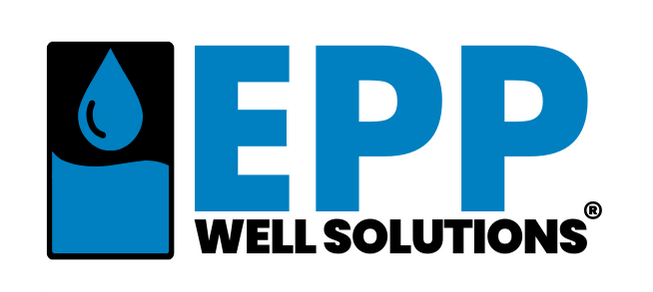How Much Water Does an Average Household Use?
Water is vital for daily household tasks, from cooking and cleaning to bathing and outdoor upkeep. For homeowners with private wells, particularly low-yield ones, understanding typical water consumption is essential to ensure their system meets demand without overburdening the well. This article explores average household water usage, factors influencing consumption, and innovative solutions to optimize water supply for low-producing wells. Through data, practical insights, and advanced technology, we aim to equip homeowners with the knowledge to manage their water needs effectively.
Average Household Water Consumption
How much water does a typical household use? Estimates suggest an average American household consumes about 300 gallons per day. For a family of four, this translates to roughly 75 gallons per person daily. Monthly, this amounts to approximately 9,000 gallons, or 108,000 gallons annually. While municipal water users may not notice this volume, households with low-yield wells—producing less than 1 gallon per minute (GPM)—can struggle to meet these needs, risking water shortages or pump damage.
Water usage splits into indoor and outdoor activities. Indoor tasks, such as showers, toilet flushing, laundry, and dishwashing, account for about 70% of consumption, or 210 gallons daily for a family of four. Outdoor activities, like lawn irrigation or car washing, make up the remaining 30%, roughly 90 gallons per day, with higher usage in warmer months. These figures highlight the diverse demands on a household’s water supply, especially for well-dependent homes.
Factors Influencing Water Usage
Household water consumption varies due to several factors. Larger households naturally require more water—a single-person home might use 50-100 gallons daily, while a family of six could exceed 450 gallons. Lifestyle choices impact usage: frequent laundry or long showers increase consumption, whereas water-conscious habits like shorter showers reduce it. Modern appliances, such as efficient toilets or high-efficiency washing machines, significantly cut water use compared to older models.
Seasonal changes affect consumption, with summer irrigation often doubling monthly totals, while winter focuses on indoor needs. Geographic location plays a role—arid regions demand more outdoor watering than wetter climates. For well users, the well’s yield is critical. Low-yield wells struggle to deliver the 300 gallons needed daily, making efficient management essential to avoid over-pumping, which can deplete water levels and damage the well or pump. Recognizing these factors helps homeowners align their water use with their system’s capacity.
Challenges of Low-Yield Wells
Homes with low-yield wells face significant hurdles in meeting average water demands. A well producing 0.5 GPM yields only 720 gallons daily if pumped continuously, but pumps require rest periods, and wells need time to recharge. For a household using 300 gallons daily, this can lead to shortages during peak usage, inconsistent water pressure, or pump burnout from over-pumping. Traditional solutions, such as larger storage tanks or deeper wells, are costly and not always effective. Conservation methods, while helpful, may not fully address the needs of larger households or high-demand seasons, highlighting the need for advanced technology.
Strategies for Water Management
Homeowners with low-yield wells can adopt water-saving practices to reduce strain on their systems. Installing low-flow showerheads and faucets can cut indoor use by 20%, while high-efficiency appliances reduce laundry and dishwashing consumption. Watering lawns early or late in the day minimizes evaporation, and drip irrigation conserves garden water. Fixing leaks promptly prevents waste, and tracking usage helps identify high-consumption habits. These strategies help households manage their 300-gallon daily average more sustainably.
Introducing the Well Harvester®: A Smart Solution
For households struggling with low-yield wells, the Well Harvester offers a patented, high-tech solution to meet water needs while protecting well health. Unlike conventional systems that rely on timers or manual controls, it automatically adjusts water draw based on real-time well levels, maximizing water harvest without over-pumping. Its 215-gallon storage tank, expandable for larger homes, covers a significant portion of a family of four’s 300-gallon daily use, reducing reliance on continuous pumping.
Equipped with a 20 GPM booster pump, the Well Harvester delivers consistent water pressure up to 60 psi, ensuring reliable performance for showers, appliances, and irrigation. A touchscreen provides real-time data on tank levels, pump status, house pressure, and water usage trends, empowering homeowners to monitor consumption. The system runs optimizations to fine-tune water draw, balancing storage and well protection. These features make it a compact, plug-and-play solution for low-yield well households.
Sustainable Water Management
Understanding that an average household uses about 300 gallons daily for a family of four is key to effective water management. For homes with low-yield wells, meeting this demand requires strategic planning and advanced technology. The Well Harvester ensures consistent water supply through smart pumping, substantial storage, and reliable pressure, all while protecting well health. By adopting water-saving practices and leveraging this technology, homeowners can meet their water needs sustainably.
Ready to enhance your well water system?


